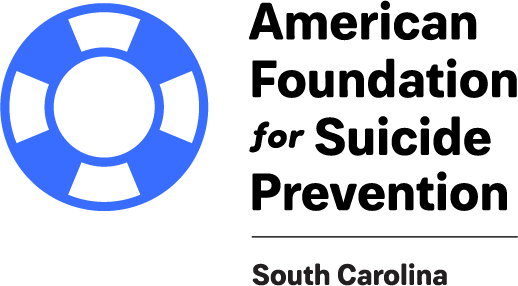
April 3, 2024
Did you hear? University of Iowa basketball player Caitlin Clark broke the late “Pistol” Pete Maravich’s scoring record. During Clark’s basketball career she’s scored more than 3,685 points as of this writing. Here is a video of her breaking the record. A once in a generation occurrence, and a remarkable feat. It’s fun to watch her drive into her opponent and then pull back and lob an off-balance three pointer. Somehow, they normally go swish! It’s entertaining to say the least. March Madness is sure to be action packed! When it comes to investing, records are being cemented too. From MSN, “US household net worth hit a record $156.2 trillion in 2023, per Fed data. The jump came amid a stellar year for the stock market. The total yearly net worth of US households soared 8% to a record high of $156.2 trillion in 2023, according to data released by the Federal Reserve.” “The change in household net worth was primarily driven by an increase in the value of directly and indirectly held corporate equity, which rose by $4.7 trillion in the fourth quarter. Meanwhile, the value of real estate on the household balance sheet fell by $0.4 trillion,” the Fed said in a statement. Amelia has enjoyed watching basketball with me this year. We made it to one game this year. With talk like this, contrarians often question whether the stock market is in bubble territory. From the Wall Street Journal, “Stocks are expensive, they’ve gone up a lot in a very short time and investors are excited. Not surprisingly, talk of bubbles is widespread. But many of the usual accompaniments to a bubble are missing.” If you’re not sure what I mean by a bubble, consider this definition from the WSJ. “There’s no single definition of a market bubble, but for me it has to involve a speculative mania. It’s when buyers en masse cross the line from assessing future profit potential to buying something they know is unreasonably expensive—or just don’t care about the price at all…” Whether the stock market is in bubble territory or not, we suggest taking steps to mitigate our risk from market downturns when we are within five years of retirement or we’re in retirement. When accumulating assets for retirement is our number one priority, recording-setting markets probably shouldn’t cause us much trepidation, because we typically have a long time horizon before we’re going to use our funds. Ansley recently wanted to go skiing. In other words, big ups in the markets are great, but if we experience a big dip, we should hopefully have time to recover. When we’re in our window of time to possibly use our funds for retirement income, our strategy should shift from an accumulation stance to an income and distribution stance. We should ask the question, how can I sustainably take income and distribution from my accounts? Everything operates better with clearly defined systems. I once heard it said that “Clarity is kindness.” A way that you can be kind to yourself is to decide beforehand how you’re going to eventually take income away from your retirement accounts. Without a plan in place, you may resort to being a stock market timer. What I mean is if we have no plan for how we are going to take income out of our accounts and we just plan to sell some Apple shares or whatever we’re holding, we are in a way attempting to time the market. We’re hoping we’re selling at the appropriate time. Here’s how we create a system of withdrawals. We figure together what it takes to pay your bills each year. We multiply that number times ten. We figure whether you are planning to spend on aspirational things like a recreational vehicle or frequent trips to Europe or to see the grandkids in Montana. And we place that money in what we call our “blue bucket.” If this exercise is perplexing, we normally default to putting 40% to 50% of our investable assets in the blue bucket. We invest in the blue bucket to be as stable as possible. In a perfect world it’s going to go up a whole lot more than it will ever go down. We draw the blue bucket down over the next ten years. This allows our red bucket that’s more aggressively invested in the market to appreciate. This also creates a safety net for us so that if a once in a generation stock market crash happens, we can be as insulated from problems as much as possible.

April 3, 2024
Last week I flew out to Kansas City to attend a conference that our back-office support company, Creative One, hosts each year. I feel like I do a pretty good job of maintaining a good attitude most of the time, but flying tests my disposition. Maybe now that I’ve identified this issue, I can figure out a way to overcome it. Something about long lines, invasive security, and being in tight places with strangers is anxiety inducing. There is something else going on that tends to create anxiety too…. More on that in a bit. Can you believe other advisors are interested in how our newsletter works and my process? I couldn’t believe it either. The folks at Creative One asked me to be on a panel at a breakout session to talk about this newsletter and our processes for developing the content and to give pointers so others can create their own newsletters. I’ve been thinking about something that I need your help with. It seems a little bland to refer to this newsletter as just a newsletter. I think it needs a name that can further describe it. Have you ever heard the saying, “I can’t see the forest for the trees?” That’s where I am with naming our newsletter. If you have some input please reply here and give us your recommendations. It's taken years for Amelia to work up the courage to climb to the top of this jungle gym but she's finally done it! I often ask people if they keep up with the financial news and a common answer is, “No, there’s nothing I can do about it.” Or another version sometimes is, “Yes, and it just makes me worry.” If either of these answers resonates with you, your response is valid. The last few years have seen volatility that can feel like we’re on a rollercoaster that’s repeatedly hanging us upside down. During 2020 the stock market dropped 37% in just 30 trading days before violently swinging back up before the year end after the government spent trillions of dollars to stimulate the economy. Then in 2021 the S&P 500 ended the year nearly 27% up, only for 2022 to see a decline of over 19%. Last year in 2023 the S&P 500 closed up 24%. Strap in tight. It’s been a wild ride. Last December the Federal Reserve stated interest rates are likely to come down this year, and just the thought of a rate cut sent the market up. Then the first Federal Reserve meeting came and went with no change in rates. It seems unlikely rates will come down at the next meeting. If this uncertainty wasn’t enough, can you believe that our national debt is increasing by $1 trillion every 100 days? Our debt is moving up so high it’s hard to keep it straight how far in the hole we are. From CNBC , “Bank of America investment strategist Michael Hartnett believes the 100-day pattern will remain intact with the move from $34 trillion to $35 trillion.” Continuing from the article, “Moody’s Investors Service lowered its ratings outlook on the U.S. government to negative from stable in November due to the rising risks of the country’s fiscal strength. In the context of higher interest rates, without effective fiscal policy measures to reduce government spending or increase revenues, Moody’s expects that the US’ fiscal deficits will remain very large, significantly weakening debt affordability.” If that wasn’t enough, we haven’t touched on the proxy wars we are fighting, or the divisive election we have coming up. Fortunately, there are steps you can take to attempt to immunize yourself from these potentially anxiety inducing geopolitical events that we have little control over. I’m not sure there has ever been a time when proper financial planning was more needed than today. If we have a long time horizon before retirement, we may be able to delay our precise preparation, but if we’re within the five-year window before retirement or we’re in retirement, there are proactive steps you should take to try to insulate yourself from the issues outlined here. One of which is creating a system for retirement income distributions from your accounts. It’s not good enough to just pick which account or wait until your liquidity need arises to determine how to make withdrawals. We should have a plan for how we are going to create retirement income over the next decade. This is one of the things our 3 Roles of Money planning process addresses. If we have a million or more dollars saved for retirement, we recommend having a tax mitigation plan in place. How we can create tax-free income later in life may be important. Remember, the government doesn’t produce revenue. The government takes from one person and distributes it somewhere else. Can you believe that when Ronald Reagan assumed office the highest tax rate in America was 70%? It’s hard to fathom today, but how can we deal with our $34 trillion of debt without higher taxes? If your advisor hasn’t addressed this with you, you need to figure out why.

April 3, 2024
Before Amelia gets out of the car at school in the mornings, I sometimes remind her to be aware. Aware of her surroundings, aware of others around her, and to think about how her actions impact the situations she’ll find herself in that day. By being aware we may be able to avoid a dangerous situation, but sometimes more importantly when we’re aware it allows us to perceive how people around us are feeling. fact, there’s a lot of research around emotional intelligence. From Harvard Business School ’s site, “Emotional intelligence is defined as the ability to understand and manage your emotions, as well as recognize and influence the emotions of those around you. The term was first coined in 1990 by researchers John Mayer and Peter Salovey, but was later popularized by psychologist Daniel Goleman.” I’ve got a confession to make… I love coffee, and the quick surge the caffeine provides. I had drunk coffee for years, and I didn’t think it had much effect on me. I’d have a cup right after I got up while I read. Then I carried a cup out the door to work. Right after lunch I was ready for another burst of energy so up to the coffee shop I walked. It was almost like I was part of coffee’s life not the other way around. I started making some personal observations, and I noticed was feeling anxious for no reason. I was prompted to do this because, I’d be in a social setting and begin to feel nervous and jittery for no apparent reason. I started deliberating on my issue and I decided to do an experiment: Only drink one cup of coffee per day. It was life altering. It may sound like I’m exaggerating, but I started to notice things I’d never noticed before. Now that I wasn’t jittery, I could focus on other people more. I started noticing when it felt like another person was nervous or apprehensive. Observing these things has helped me know when to alter how I’m talking to people or just be a more emotionally aware person. A reason some people hire a financial planner is they are aware that there may be things they don’t know and they want help avoiding pitfalls that stand between them and a successful retirement. Barrons recently published some key findings: “The American College of Financial Services has released the results of its latest retirement-income literacy test, a survey of more than 3,700 Americans between 50 and 75 that researchers say establishes a ‘compelling link between retirement literacy and working directly with a financial advisor.’ The survey results indicate that Americans who work with an advisor score notably higher on a variety of measures of financial wellness and retirement preparedness than those who go it alone.” The study also found nearly a third of respondents are going into retirement without sound knowledge of Medicare and Social Security. Steve Parrish, professor of practice at the college, said about the study, “In the U.S., with the exception of Social Security and the comparatively small number of workers with guaranteed pensions, saving for retirement is voluntary. This requires the consumer to know how much to save, where to save it, and how much to draw down at retirement.” Generally, when folks engage a financial advisor, that advisor is focused on investment management only. How do I know this? Because we do anywhere from 12 to 20 workshops each year where we invite people to come learn about Social Security, Medicare, and tax planning for retirement. Many of these people who attend already have a financial advisor but their financial advisor is not helping them with these things. If they were, they wouldn’t be sitting down to visit with us. If we are not caring for the whole person when it comes to retirement planning, we aren’t fully helping them. Comprehensive holistic financial planning involves investments, insurance, healthcare planning, long-term care planning, Social Security optimization, tax planning, estate planning, and ongoing personalized assistance. If you’d like see if you’re on track with the areas mentioned above, just reply here or call our office at 864.641.7955 for a complimentary 15-minute call.



